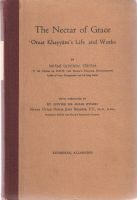The Omar Khayyam Puzzle. L.P. Elwell-Sutton.
Journal of the Royal Central Asian Society 55 (1968) 2, pp. 167–179
A recent publication has stimulated interest once again in the Persian poet Omar Khayyam-though admittedly to the English speaking world he is already by far the best-known, and for many the only, figure in Persian literature. Yet in fact he is a rather shadowy, insubstantial person, largely ignored in his own land of Iran, and about whom surprisingly little is recorded in history. Much of what is related about him is purely legendary: for instance, the well-known story of his schooldays friendship with the vizier Nizam al-Mulk and Hasan Sabbah, founder of the sect of the Assassins-impossible on chronological grounds alone. Other legends have been ad added through the centuries, particularly by some of the Sufi sects in Iran and Afghanistan.

